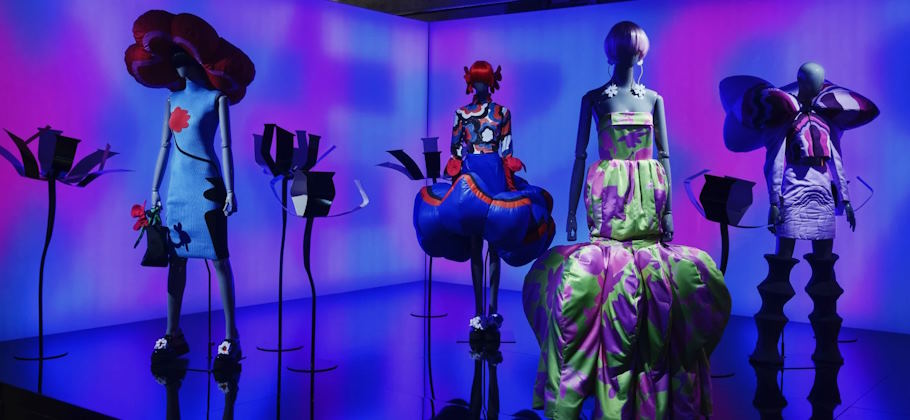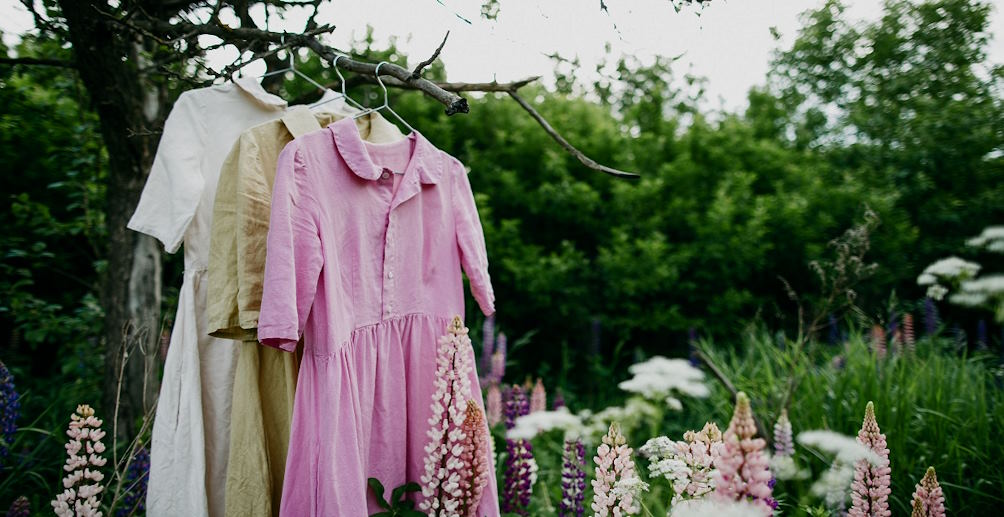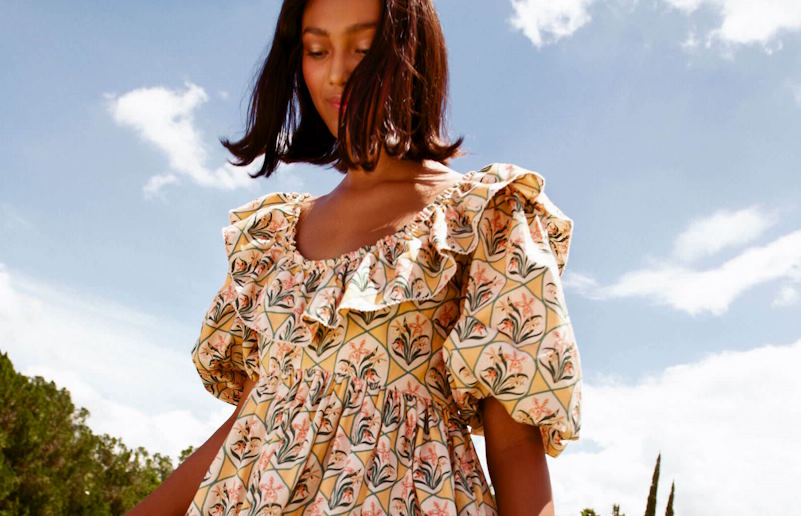The exquisite artistry of floral patterns and the innovation of textures echoing the wilderness serve as a testament to fashion’s enduring love affair with the natural world. The history of this enchanting connection traces back to ancient civilizations that adorned their garments with nature’s motifs, expressing reverence for the world around them. From there, the thread winds through the tapestry of history, connecting the romantic ideals of the 19th century, the emergence of iconic fashion houses, and the contemporary fusion of sustainability and style. As we embark on this exploration, we unravel not only the visual elegance of nature-infused designs but also the profound cultural, symbolic, and sustainable significance they hold in our modern fashion landscape.
The Resurgence of Floral Prints
Examination of the evolution of floral prints in different decades:
Floral prints, like nature itself, have undergone a captivating evolution through the decades. From the vibrant and bold blooms of the 1960s to the delicate and muted petals of the 1990s, each era has breathed new life into this timeless pattern. The ’60s celebrated the spirit of rebellion with oversized and psychedelic florals, while the ’80s embraced bold contrasts and maximalism. The ’90s brought a shift towards grunge, with darker and edgier interpretations. In recent years, we’ve seen a revival of vintage aesthetics, with a blend of various eras creating a fusion of nostalgia and modernity.
Influence of key fashion icons and designers in popularizing floral patterns:
Floral prints owe much of their popularity to the visionary designers and fashion icons who breathed fresh air into this classic motif. Icons like Audrey Hepburn and Jackie Kennedy donned elegant floral ensembles, while designers like Emilio Pucci and Vera Wang transformed floral patterns into high art. More recently, brands like Gucci and Dolce & Gabbana have reimagined florals, adding a whimsical and opulent touch that resonates with contemporary sensibilities.
 Beyond Florals: Nature-Inspired Textures and Shapes
Beyond Florals: Nature-Inspired Textures and Shapes
Exploration of fashion elements inspired by natural textures:
While floral prints have long been a hallmark of nature-inspired fashion, designers have ventured beyond petals and leaves to incorporate the very textures of the natural world. Inspired by the ruggedness of tree bark, the gracefulness of feathers, and the intricacy of scales, fashion has embraced a tactile journey through the elements. These textures, once relegated to nature’s domain, have found their way onto fabrics and garments, allowing wearers to feel a connection with the environment they adorn.
Role of sustainable and eco-friendly fashion in the rise of nature-inspired textures:
The surge of interest in sustainable and eco-friendly fashion has harmonized with the allure of nature-inspired textures. Ethical considerations and eco-consciousness have led to the exploration of materials that mimic natural textures without causing harm to the environment. This convergence has given rise to innovative fabric blends and manufacturing techniques, paving the way for a more harmonious relationship between fashion and nature.
 Sustainable Fashion and Nature
Sustainable Fashion and Nature
Discussion on the role of nature-inspired fashion in the sustainable and slow fashion movements:
Nature-inspired fashion has emerged as a guiding light in the realm of sustainability and slow fashion. With consumers increasingly mindful of the environmental impact of their choices, nature-themed designs offer a harmonious solution. By drawing inspiration from the natural world, designers are often inclined to integrate eco-friendly practices, fostering a deeper connection between fashion and nature. This synergy aligns seamlessly with the principles of slow fashion, advocating for timeless designs that stand the test of time, thus reducing waste.
Analysis of eco-friendly materials and production techniques in nature-themed fashion:
The allure of nature extends beyond aesthetics into the realm of materials and production techniques. Designers are turning to sustainable textiles like organic cotton, hemp, and Tencel, which tread lightly on the environment. Innovative dyeing methods inspired by plant pigments minimize chemical waste, while upcycling and zero-waste patterns showcase a commitment to responsible production. As such, nature-inspired fashion becomes a canvas to showcase the potential of eco-conscious creativity.

